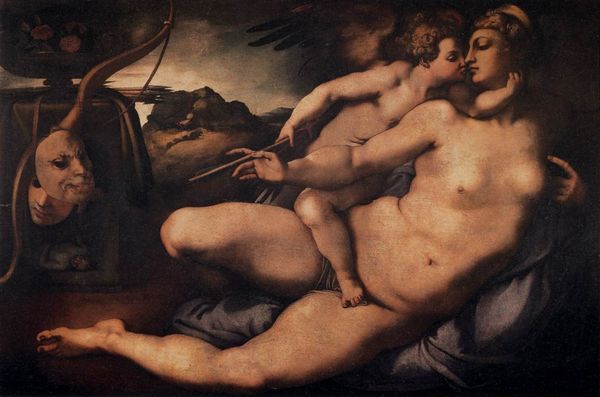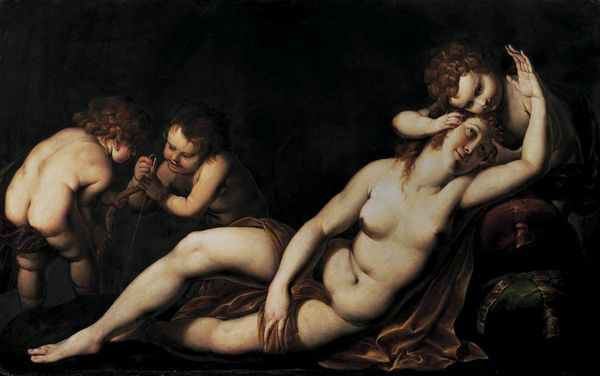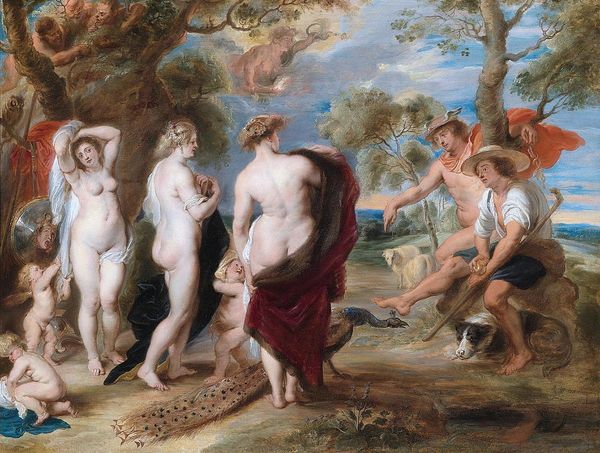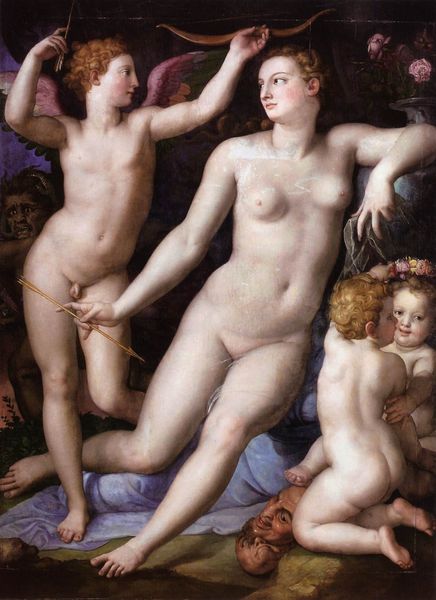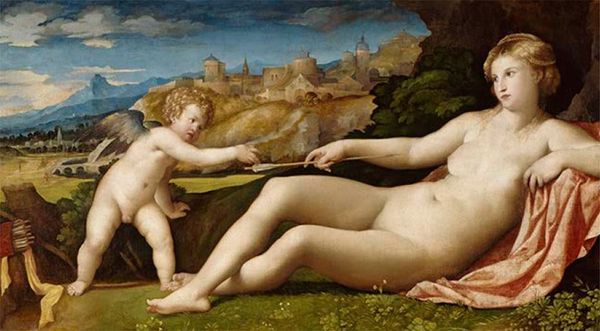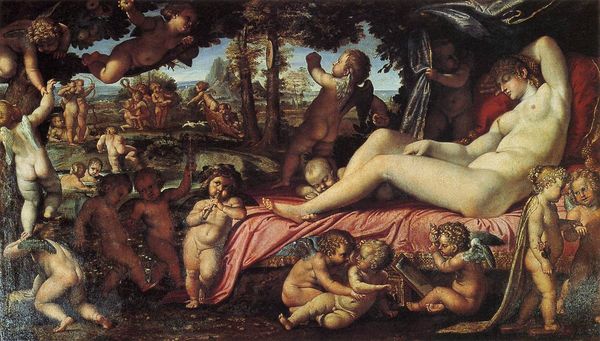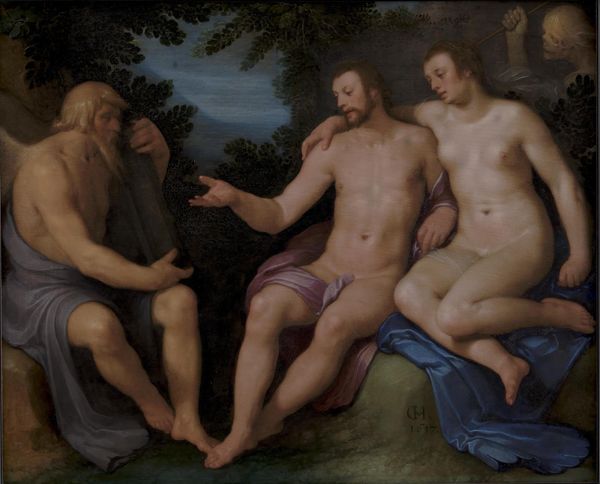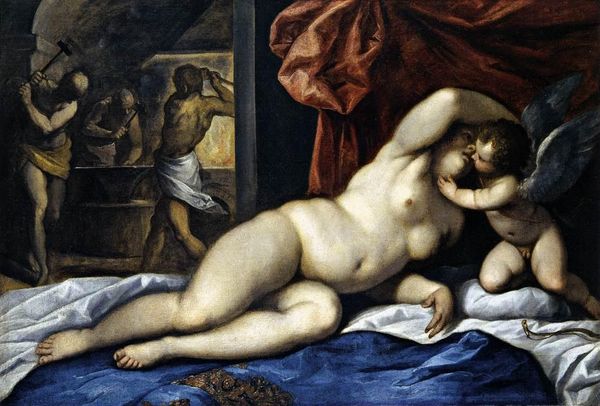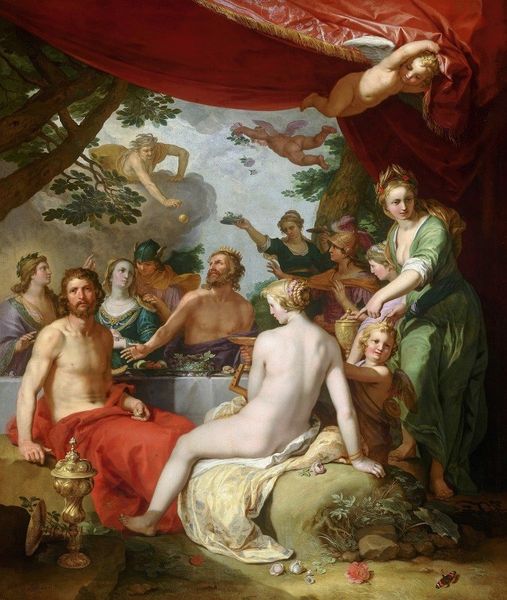
painting, oil-paint
#
allegory
#
baroque
#
painting
#
oil-paint
#
figuration
#
flemish
#
mythology
#
history-painting
#
nude
Dimensions: 141 x 200 cm
Copyright: Public domain
Editor: So here we have "Venus, Cupid, Bacchus and Ceres" painted in 1613 by Peter Paul Rubens, made with oil on canvas. There's this wonderful opulence that really captures my eye; these lush figures, all seemingly caught in a moment of indulgence. How do you interpret this work? Curator: I see a rich tapestry of symbols woven together, a deliberate articulation of earthly pleasures sanctioned by the divine. Do you notice how Rubens doesn’t simply depict; he layers meanings? Venus, the goddess of love, Ceres of agriculture, Bacchus of wine, even Cupid hovering with grapes, it all points towards prosperity. Editor: That’s interesting! So, beyond the obvious associations, is there something deeper? Curator: Absolutely. It's about the cyclical nature of life. Venus offering herself shows love as a generative force, connecting Bacchus, with his gift of wine symbolizing transformation, and Ceres, a symbol of nurture and the fruits of the Earth. Consider how Rubens paints the gaze. Where do your eyes go? Editor: I see each figure's eye line creates this loop, bouncing back and forth between the characters! Curator: Precisely. These details speak volumes about how the artist understood and translated myth for his audience. Notice too how even the colours play their part. What feelings do these rich reds, whites, and golds provoke in you? Editor: There's a vibrancy...a sensuality. The painting is like a celebration of the senses. Curator: It's about life's bounty and a deeper continuity found through symbols. It reminds us that visual art doesn't just reflect, it remembers. Editor: It's really helpful to think about those repeating images as holding meaning over time. I'll definitely think about that next time I see one of his paintings.
Comments
No comments
Be the first to comment and join the conversation on the ultimate creative platform.
